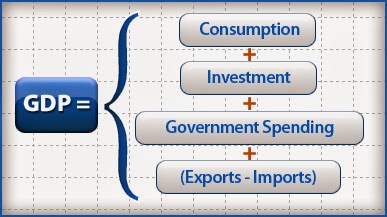Refer to the following PDF for a deeper understanding on the role of allocative efficiency:
III. Government Responsibility towards Allocative Efficiency:
1. Pro for Stability not Spending: (U.S.A.)
http://www.heritage.org/research/reports/2009/09/the-economic-role-of-government-focus-on-stability-not-spending
2. Milton Friedman's The Economic Responsibility of Government:
http://www.blue-route.org/blog/blog/politics/milton-friedman-role-government/
IV. Viewpoints and Models of Macroeconomics:
Over the years, different models have been developed by economists to explain the operation of the macroeconomy, and different policy prescriptions have been advocated to stabilize the economy.
a.
Classical Economics- Popularly accepted theory prior to the Great Depression of the 1930s; says the economy will automatically adjust to full employment.
Dates from Adam Smith and his book
The Wealth of Nations in the eighteenth century. Emphasizes the free market economy, when left alone, will automatically operate at full employment based on the following assumptions:
1. Supply creates its own demand
2. Wages and prices are flexible and increase or decrease to ensure that the economy operates at full employment.
3. Savings always equals investment
b.
Keynesian Economics- Based on the work of John Maynard Keynes (1883-1946), who focused on the role of aggregate spending in determining the level of macroeconomic activity
Keynes linked increases and decreases in output and employment with increases and decreases in spending. Rejected the classical idea of an automatic adjustment to full employment and believed that the spending gap responsible for recessions and unemployment could be filled by the government.
Reached its peak of popularity during the 1960s. In the early 1970s, however, it became a target for attack. This led to the political mood during the 1980s which favored a movement away from government intervention in the economy.
c.
New Classical Economics- A return to the basic classical premise that free markets automatically stabilize themselves and the government intervention in the macroeconomy is not advisable.
They believe that over the long run, the economy will operate at the natural rate of unemployment (the rate of unemployment at which there is no cyclical unemployment).
d.
New Keynesian Economics- Builds on the Keynesian view that the economy does not automatically return to full employment; emphasizes downward sticky prices (when prices and wages are inflexible) and individual decision making in the microeconomy.
A distinguishing feature of new Keynesian economics is the attention it pays to decision making by individual firms, or decision making in the microeconomy. One important explanation for the downward inflexibility of prices and wages is that firms set their prices based on what is necessary to maximize their own profits, not on the basis of what is occurring in the economy at large. The fact that individual sellers can resist pressure to lower their prices and may find it most profitable to decrease output when aggregate demand weakens helps explain why unemployment can persist in the economy.
e.
Monetarism- School of thought that favors stabilizing the economy through controlling the money supply.
Popular during the 1970s and early 1980s. Favor free markets and advocate limited government intervention inn the macroeconomy. Align more with the classical and new classical schools. Typically, monetarists suggest that the ideal strategy for reaching full employment or avoiding demand-pull inflation is to allow free markets to maintain proper control over the money supply.
f.
Supply-Side Economics- Policies to achieve macroeconomic goals by stimulating the supply side of the market; popular in the 1980s.
Associated with President Reagan as "Reaganomics", additionally found some support with individuals in the George W. Bush administration. The basic premise behind supply-side economics is to stimulate the supply side of economic activity by creating government policies that provide incentives for individuals and businesses to increase their productive efforts.
Another proposal is to lower taxes for businesses and individuals. It is argued that lowering the tax burden on businesses would make investments in buildings, equipment, and other productive resources more profitable, thereby stimulating growth in the economy. Lowering the tax burden on individuals is said to lead to greater savings (which could be channeled to businesses for investment purposes) and increased personal incentives to work. Government deregulation is also called for to increase productivity.


































